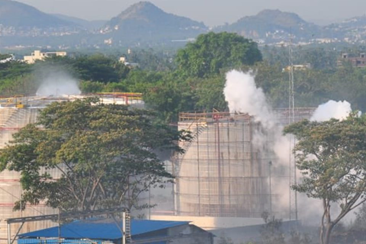Consequence Modelling of Toxic Gas Releases
Much has been said about the science and tools used to assess the scale of catastrophic events. The term “consequence modelling” will be used in this blog to describe this activity. On the morning of the 7th May 2020, a styrene leak occurred at the LG polymers chemical factory in Visakhapatnam, India. It is currently believed the leak occurred due to the failure of a valve on the refrigeration system cooling the styrene tanks, causing the styrene to boil off and escape. It is currently unknown how much styrene gas was released, however the site had capacity to store 2,000 metric tonnes of the acutely toxic material.
The fumes spread out into the surrounding area over a radius of approximately 3 kilometers, covering several nearby villages. Hundreds of people were hospitalized with breathing difficulties and burning sensation in the eyes, and there have been 13 fatalities initially reported as a result of the incident. The full extent of the effects on those exposed is yet to be appreciated.
Styrene gas leaking from the LG Polymers chemical factory
Unfortunately, this isn’t the first time India has experienced a significant incident involving the release of toxic gas. In 1984, a gas leak occurred at Union Carbides pesticide manufacturing plant in Bhopal. Over 500,000 people were exposed to methyl isocyanate gas, resulting in several thousand fatalities. This was one of the worst process safety incidents in history.
Extent of gas plume released during the Bhopal incident
What do both of these incidents have in common? The toxicity of the gas cloud extended well beyond the immediate vicinity of the site, and the resulting harm on nearby communities was severe.
Consequence modelling is regularly used to estimate the severity of hazardous scenarios for processing plants. It is used as part of a broader safety assessment process that assesses the scale of an event and its severity. Several models have been established to calculate thermal effects of fires, overpressures from explosions, and the dispersion behavior of large-scale gas releases. Modelling the impact of a scenario allows us to determine its severity which in turn helps us create effective emergency response plans and to aid decision making for managing the risk on a site.
A dispersion model displayed in BREEZE 3D Analyst
Of all types of consequence modelling, it is arguable that dispersion of toxic gases is the most complex. Dispersion behavior is highly dependent on atmospheric conditions, and the effect on people is far more time dependent than effects such as overpressure from an explosion (e.g. exposure to a high concentration of toxic gas for a short time may be less harmful than a moderate concentration for an extended period of time).
With any modelling work, several assumptions must be made to obtain a meaningful result. In the case of modelling toxic dispersion of gases, we must make assumptions on the atmospheric conditions such as wind speed, temperature, humidity and time of day when the incident occurs. These assumptions are typically chosen as conservative values – we model for a ‘perfect storm’ where all conditions line up to give the worst possible outcome.
Example wind rose – showing wind speed and direction probabilities
People often argue that we should be working towards the most likely outcome not the 1% case that is presented. However, would you want to fly on a plane designed to hold together only during the average weather conditions, or one that’s built to withstand a once in 100-year storm? With process safety we must always consider the low-likelihood high-severity scenarios.
We have developed a dispersion modelling checklist which we use when auditing modelling work we have carried out for facilities. This check list helps to ensure any dispersion modelling for a facility has adequately considered the range in conditions that may be present during a major incident.
We have developed the following checklist for dispersion modelling as a final check to make sure we have gone through the correct steps






